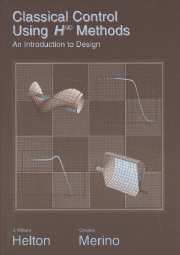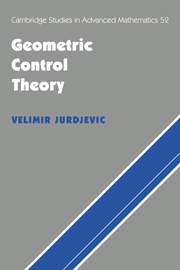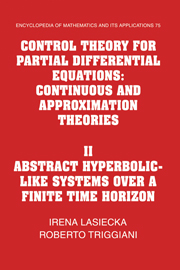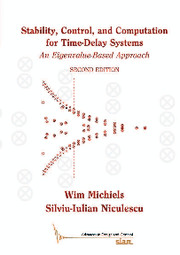Classical Control Using H-infinity Methods
One of the main accomplishments of control in the 1980s was the development of H8 techniques. This book teaches control system design using H8 methods. Students will find this book easy to use because it is conceptually simple. They will find it useful because of the widespread appeal of classical frequency domain methods. Classical control has always been presented as trial and error applied to specific cases; Helton and Merino provide a much more precise approach. This has the tremendous advantage of converting an engineering problem to one that can be put directly into a mathematical optimization package. After completing this course, students will be familiar with how engineering specs are coded as precise mathematical constraints.
Product details
January 1987Paperback
9780898714241
183 pages
250 × 176 × 10 mm
0.33kg
This item is not supplied by Cambridge University Press in your region. Please contact Soc for Industrial & Applied Mathematics for availability.
Table of Contents
- Preface
- Part I. Short Design Course:
- 1. A Method for Solving System Design Problems
- Rational Functions
- The Closed Loop System S
- Designable Transfer Function
- A System Design Problem
- The Method
- Exercises
- 2. Internal Stability
- Control and Stability
- Interpolation
- Systems With a Stable Plant
- Exercises
- 3. Frequency Domain Performance Requirements
- Introduction
- Measures of Performance
- Piecing Together Disk Inequalities
- More Performance Measures
- A Fully Constrained Problem
- 4. Optimization
- Review of Concepts
- Generating a Performance Function
- Finding T With Best Performance
- Acceptable Performance Functions
- Performance Not of Circular Type
- Optimization
- Internal Stability and Optimization
- Exercises
- 5. A Design Example With OPTDesign
- Introduction
- The Problem
- Optimization With OPTDesign
- Producing a Rational Compensator
- How Good is the Answer?
- Optimality Diagnostics
- Specifying Compensator Roll-off
- Reducing the Numerical Error
- Rational Fits
- Exercises
- Part II. More on Design:
- 6. Examples
- Numerical Practicalities
- Design Example 1
- Time Domain Performance Requirements
- Design Example 2
- Performance for Competing Constraints
- 7. Internal Stability
- Calculating Interpolants
- Plants With Simple RHP Zeros and Poles
- Parameterization. The General Case
- Exercises
- References and Further Reading
- Part III. Appendices: Appendix A. History and Perspective
- Appendix B. Getting OPTDesign and Anopt
- Appendix C. Anopt Notebook
- Appendix D. NewtonInterpolant Notebook
- Appendix E. NewtonFit Notebook.










